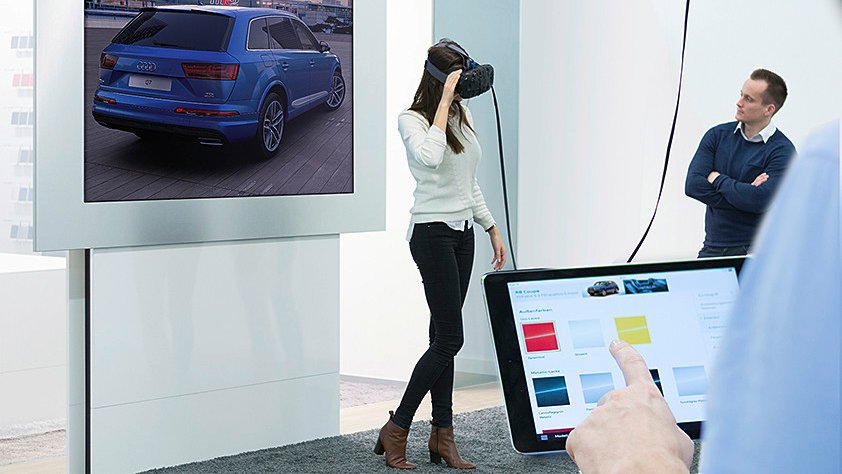At CES 2016, Audi is demonstrating advancements in virtual-reality technology that will let customers build and configure their cars and even hear what they will sound like.
In the brand’s display at the world’s foremost annual show of digital technologies, Audi is demonstrating a virtual reality system that represents a progressive innovation for automotive retail. It is being installed in a handful of showrooms in major Audi growth markets around the world.
Working with Nvidia Quadro GPUs and virtual reality suppliers Oculus and HTC, Audi is introducing a virtual showroom, where customers can explore the entire range of Audi vehicles in vivid detail using VR goggles and an immersive digital experience. They’ll be able to “build” and examine configurations of every Audi model and experience them in a range of environments. The first installation of the system in the United States is expected later this year.
At CES, show-goers are able to configure any Audi model through virtual reality headsets that provide a realistic experience and conjure up every combination of features, amenities, equipment and colors. The three-dimensional experience also includes life-like sound effects.
https://www.youtube.com/watch?v=-6d3V_YGtb4&feature=youtu.be
Based in part on the success of the huge digital powerwalls at the first Audi City dealerships in world capitals including London and Beijing, Audi began developing the virtual experience in 2013 with its VR Car Configurator, the predecessor platform to today’s virtual reality systems.
The vehicle models used by Audi can be broken down graphically into five to seven million polygons. To render each model in three dimensions and enable it to move fluidly in virtual reality demands enormous computing power. In fact, in order to be able to create a world in virtual reality that would prompt the average consumer to believe in the make-believe world inside the headset, the Audi system must be able to reproduce content at a rate of 90 frames per second.
Among the challenges was the fact that, two years ago, none of the graphic engines on the market for such headsets could display Audi vehicles in virtual reality at the required level of execution. So with expert support from the specialists and strategic partners at Zerolight in Newcastle, U.K., Audi began developing its own graphic engine especially for virtual reality display. Then Nvidia optimized it.
Thus, today, Audi is using one of the most powerful computer-based virtual reality graphic engines in the world. Audi shoppers soon will gain a new tool to help them experience Audi vehicles right in the showroom and select exactly the one they want, even if it’s nowhere in sight at the dealership.







































